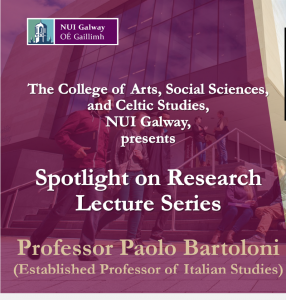
- This event has passed.
Spotlight on Research Lecture Series: From “great” to violent: on contemporary art
October 31, 2019 @ 5:00 pm
Event Navigation

By Professor Paolo Bartoloni (Established Professor of Italian Studies)
Abstract
How is art measured today, and is it possible to speak of contemporary art as “great”? At the turn of the millennium many believed that art was simply commercially driven or its opposite, ephemeral. Postmodernism has often been blamed for the demise of “greatness” in art and the fading away of art’s enigma and complexity. And yet the postmodern bubble is supposed to have burst years ago, as far back as 2005, some believe (Perniola, 2015). So, what are we left with? Nothing reassuring and comfortably recognizable it seems, certainly not a name or another “ism”. Where are we, and what kind of parameters can be used to relate to contemporary art? In fact, does contemporary art still matter? It appears so since it is now “the subject of global events, tabloid coverage and mass attendance” (Mirzoeff, 2009). Art has blasted its way into the public sphere, and has become “liable to be received as a provocation to or an act of violence” (Mitchell, 1994). Has art turned from “great” to violent, yet violent to whom and for what purpose?
By looking at a series of curatorial practices in the city of Florence, this talk will rehearse some of these questions, focusing on the way in which local identity might be challenged and even violated by the assemblage of disparate art forms that bring about what the visual studies expert Nicholas Mirzoeff calls “neoculturation” (2009).
Paolo Bartoloni is Established Professor of Italian at the National University of Ireland, Galway. In May 2019 he has been elected to the Royal Irish Academy. Previously he taught in Italian and Comparative Literature at the University of Sydney where he was Founding Director of the program in International and Comparative Literary Studies.
He has published extensively on continental theory and philosophy, especially the works of Giorgio Agamben, Walter Benjamin, Martin Heidegger, and Mario Perniola, and their impact on the reception of authors such as Blanchot, Calvino, Caproni, and Svevo. He is currently working on the interface between the Italian Renaissance and contemporary art, especially in the context of the city of Florence. He is the author of over 60 single-authored articles in edited volumes and peer-reviewed journals and of four monographs: Objects in Italian Life and Culture: Fiction, Migration, and Artificiality (Palgrave, 2016); Sapere di scrivere. Svevo e gli ordigni di La coscienza di Zeno (Il Carrubo, 2015); On the Cultures of Exile, Translation and Writing (Purdue UP, 2008); Interstitial Writing: Calvino, Caproni, Sereni and Svevo (Troubador Publishing, 2003). He has also co-edited several volumes including the thematic issue Ambiguity in Culture and Literature (CLCWeb, Purdue UP, 2010).

